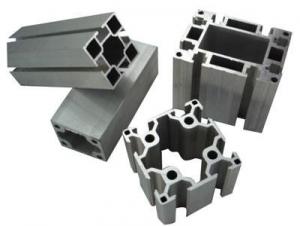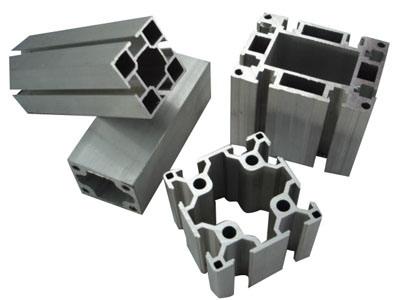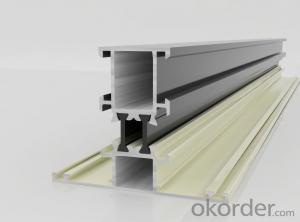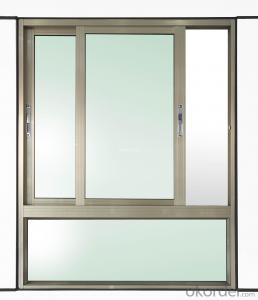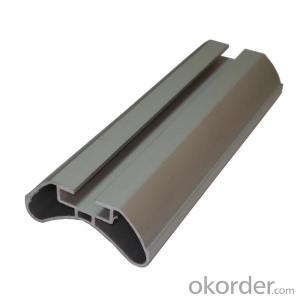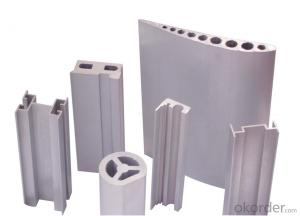Fath Aluminum Profiles - Aluminum Profile-AA6061
- Loading Port:
- China Main Port
- Payment Terms:
- TT OR LC
- Min Order Qty:
- -
- Supply Capability:
- -
OKorder Service Pledge
OKorder Financial Service
You Might Also Like
1)Material : 6063 6061 6060 and different aluminium alloy
2)Status:T4 T5 T6 or other special status
3)Surface treatment: mill finish, anodized sliver ,anodized bronze, anodized champagne, anodized black pearl, various power coating color, electrostatic sliver, electrostatic champagne, electrostatic golden, electrostatic titanium , machine polish sliver, machine polish bronze, wooden grain color, and Fluorocarbon spraying.
4)Annual capacity : 80000TON
5)Quality : China Nation Standard GB/T 5237 2004 (advanced class)
6)Use: can be widely using aluminium window, door, curtain wall, hand railing , normal aluminium profile, decorative and industrial aluminium profile
- Q: This question asks if aluminum profiles can be recycled through existing recycling programs or facilities in the user's local area.
- <p>Yes, aluminum profiles can typically be recycled using existing recycling programs or facilities. Most recycling centers accept aluminum, and aluminum profiles are no exception. However, it's always a good idea to check with your local recycling program to confirm their specific guidelines and requirements. Some facilities may require aluminum profiles to be clean and free of any non-aluminum parts before recycling. You can also look for local scrapyards or metal recycling businesses that specialize in aluminum and may offer better rates for your aluminum profiles.</p>
- Q: How much is the aluminium frame Aonaike surface over three thickness? And three prism specifications?
- The thickness of the aluminum profile is 1.8mm, and the size of the three prism is 136126100,80.
- Q: Are aluminum profiles capable of being tailored to fit the unique specifications of a construction project?
- <p>Yes, aluminum profiles can be customized to meet specific requirements of a building project. They offer versatility and flexibility, allowing for adjustments in size, shape, and design. Manufacturers can produce aluminum profiles with varying thicknesses, lengths, and finishes to suit the project's structural and aesthetic needs. Customization may include specific bends, cuts, or holes to ensure compatibility with other building components. This adaptability makes aluminum profiles a popular choice for various construction applications, from window frames to structural supports.</p>
- Q: Are aluminum profiles suitable for use in electronics manufacturing?
- Yes, aluminum profiles are suitable for use in electronics manufacturing. Aluminum is a lightweight and durable material with excellent thermal conductivity, making it ideal for use in electronic components and enclosures. It also offers good electromagnetic shielding properties. Additionally, aluminum profiles can be easily customized and fabricated to meet specific design requirements, making them a popular choice in the electronics industry.
- Q: Are aluminum profiles resistant to mold or mildew?
- Yes, aluminum profiles are resistant to mold or mildew.
- Q: The latest list of aluminum China
- Lear aluminum is also good Oh, A Well-Known Trademark in China, China energy-saving innovation enterprise ten, Hebei enterprises in Handan
- Q: Can aluminum profiles be used in the production of industrial machinery?
- Yes, aluminum profiles can be used in the production of industrial machinery. Aluminum profiles are lightweight, corrosion-resistant, and have high strength-to-weight ratio, making them suitable for various applications in the industrial machinery sector. They can be used to create structural frames, housings, support brackets, and other components in machinery. Additionally, aluminum profiles can be easily extruded into complex shapes, allowing for customization and versatility in design. The use of aluminum profiles in industrial machinery can help reduce the weight of the equipment, increase energy efficiency, and improve overall performance.
- Q: What is aluminum profile opening mold, I want to process a batch of aluminum profiles, the other side to open mold fees also expensive, then I can open the mold of things? I don't know the hero for a favor
- The aluminum molding needs the mold, generally is the extrusion molding, also needs the aluminum material mold opening.The blank in three to the uneven pressure under stress from the die orifice or extrusion gap to reduce the cross-sectional area increased in length and processing method of the products required is squeezed into, this is called extrusion molding processing blank.Extrusion, especially cold extrusion, high material utilization rate, microstructure and mechanical properties were improved, simple operation, high productivity, making the long rod, deep hole and thin wall and special-shaped parts, is less or no cutting process. Extrusion is mainly used for metal forming, and can also be used for non-metallic forming of plastics, rubber, graphite and clay billets.When extruded, the billet produces a three direction compressive stress, and even a lower plastic blank can be extruded.In addition to its application in machining, extrusion is also used in food processing. The dough is extruded by a screw and is extruded into a mold to make macaroni in various shapes.
- Q: How do aluminum profiles perform in terms of corrosion resistance?
- Aluminum profiles are known for their excellent corrosion resistance. Due to the formation of a protective oxide layer on the surface, aluminum profiles are highly resistant to corrosion, even in harsh environments. This oxide layer acts as a barrier, preventing further oxidation and corrosion. Additionally, aluminum profiles can be further enhanced through various surface treatments such as anodizing or powder coating, which provide additional protection against corrosion. Overall, aluminum profiles offer exceptional corrosion resistance, making them suitable for a wide range of applications, including construction, transportation, and manufacturing industries.
- Q: What are the specific requirements or considerations when using aluminum profiles in the construction or design of swimming pools and spas?
- <p>Yes, there are special requirements for using aluminum profiles in swimming pools and spas. These include corrosion resistance to withstand chlorinated water, which is common in pools and spas. Profiles must be made of marine-grade aluminum to prevent rust and ensure longevity. They should also be able to withstand high humidity and temperature fluctuations. Additionally, profiles need to be non-slip and easy to clean to maintain safety and hygiene. The design should also consider structural integrity to support the weight of the pool or spa structure and any associated equipment.</p>
Send your message to us
Fath Aluminum Profiles - Aluminum Profile-AA6061
- Loading Port:
- China Main Port
- Payment Terms:
- TT OR LC
- Min Order Qty:
- -
- Supply Capability:
- -
OKorder Service Pledge
OKorder Financial Service
Similar products
Hot products
Hot Searches
Related keywords
